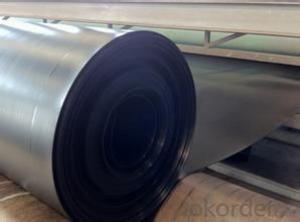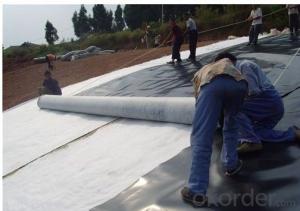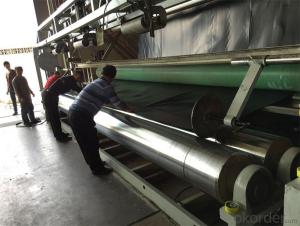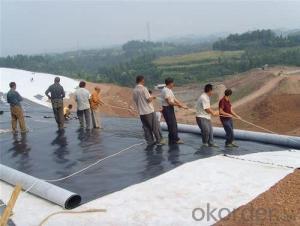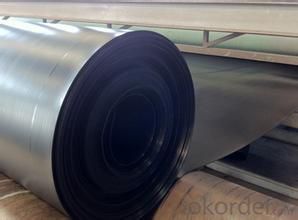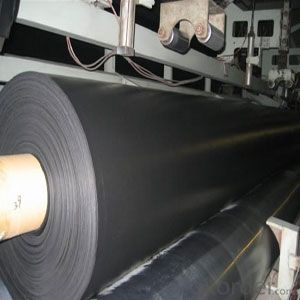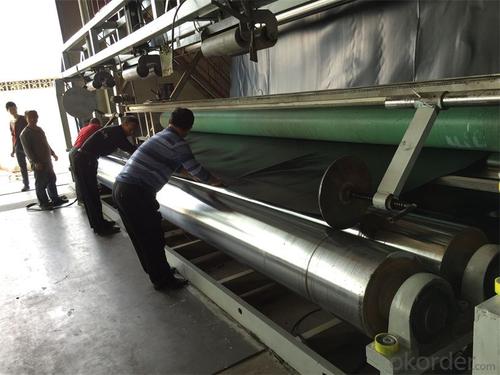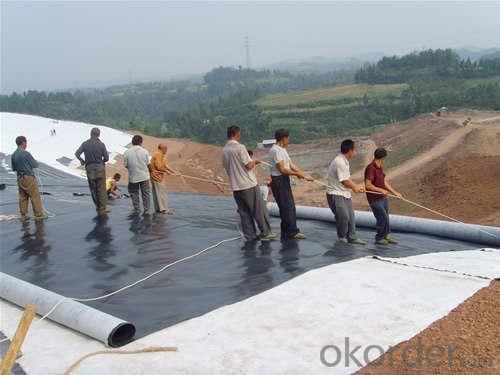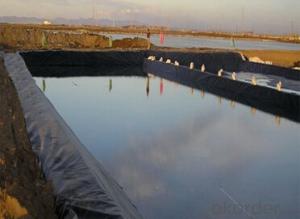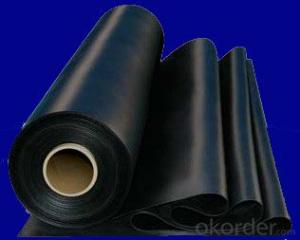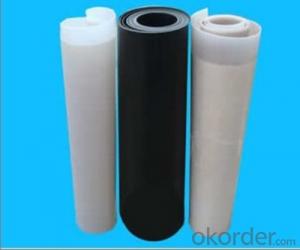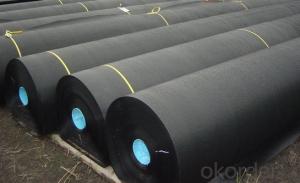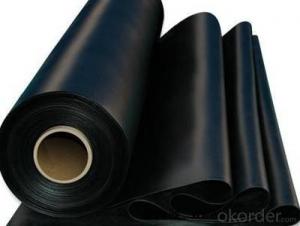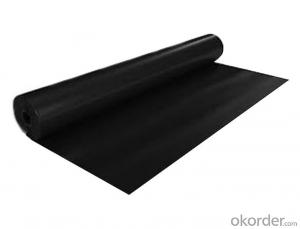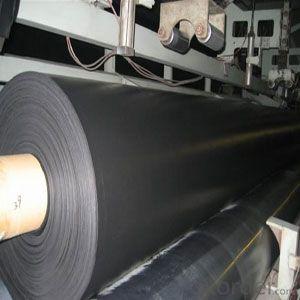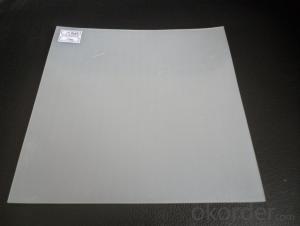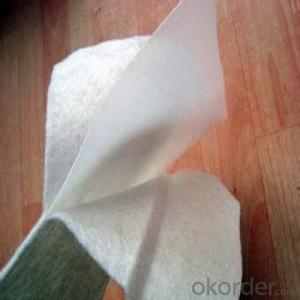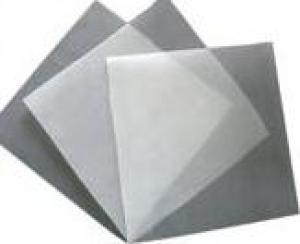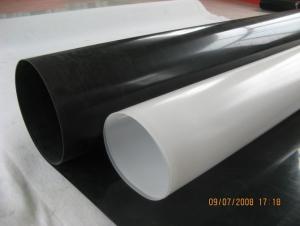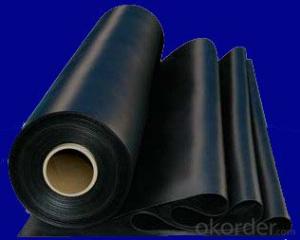Geomembrana Para Estanques LDPE Geomembrane Liner for Landfills Capping
- Loading Port:
- Qingdao
- Payment Terms:
- TT OR LC
- Min Order Qty:
- 5000 m²
- Supply Capability:
- 100000 m²/month
OKorder Service Pledge
OKorder Financial Service
You Might Also Like
Product Introduction
LDPE Geomembrane is a kind of waterproof material with basic raw material of high molecular polymer. Its material is LDPE.

Product Specification
1)Material: LDPE
2)thickness:0.3mm~3.0mm
3)width:2m~7m
]]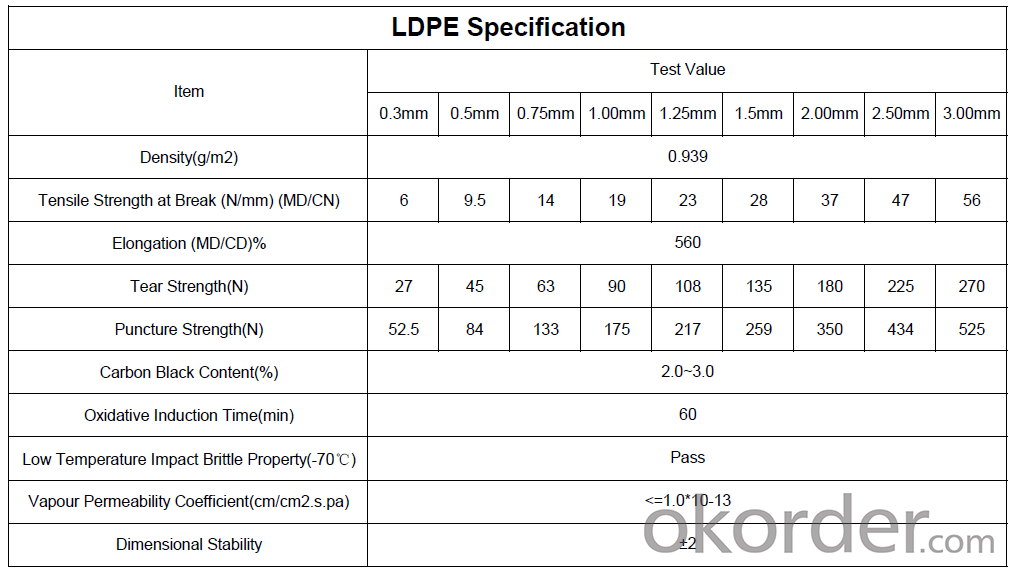 Product Package:
Product Package:
1. PE film inside, and Woven bag outside.
2. Packaged in container.
 Product Application:
Product Application:
Landfill lining
Landfills capping
Water reservoirs
Pond-lining
Irrigation canals
Tunnels
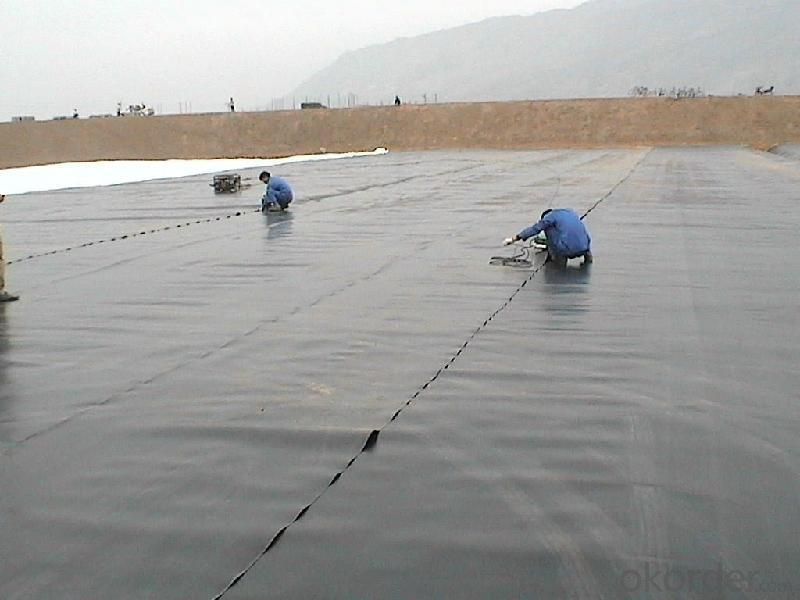

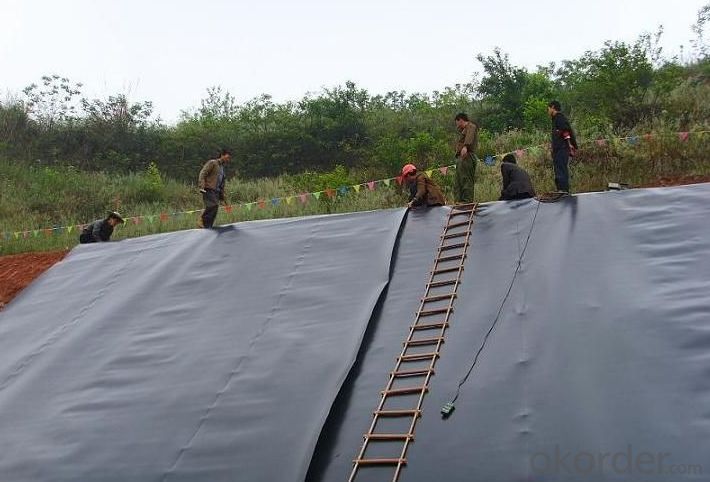
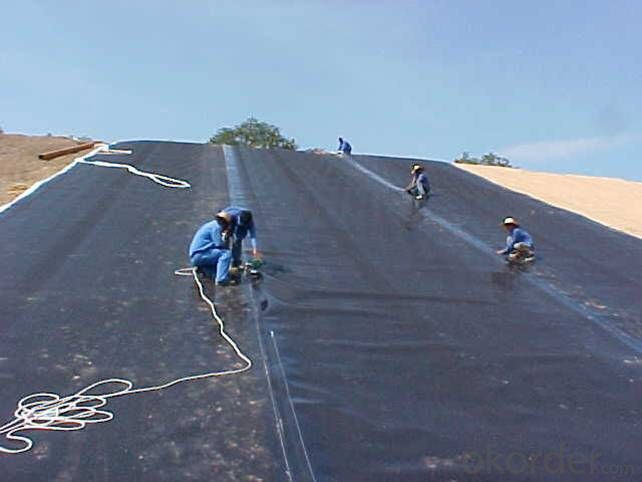
Product Advantage
1.Some raw materials are produced by ourselves, or imported from overboard, so we could control the cost and quality to competitive in the market.
2. We have research team and laboratory, so we could research new products by ourselves and produce according client’s request.
3. There are more than fifty produce lines, so we could guarantee the delivery time.
4. We supply our products to many national projects in many countries, so our quality is stable and reliable.
5. If you have problem during your project when using our product, we could arrange our engineer to help.
FAQ:
- Q: What can we do for the special customer?
A: Provide custom made service with customer's drawing; We make sure to provide you with the best solutions for your individual case. Whether standard items or non-standard items.
- Q: What can we supply?
A: We provide high levels of communication from start to finish.
- Q: What is our advantage?
A: Top Cemented Carbide has extensive business experience, Fast delivery and high quality.
- Q: Can geomembranes be used in rainwater harvesting systems?
- Yes, geomembranes can be used in rainwater harvesting systems. They are commonly used as liners for rainwater storage tanks or ponds to prevent leakage and contamination of the collected water. Geomembranes provide an effective barrier between the stored water and the surrounding soil, ensuring the quality and integrity of the harvested rainwater.
- Q: What kind of mulching film should be used for heating floor?
- " Aluminum mulching film is required for the heating floor. " This is the most typical deception. Practice has proved that the main form of heat transfer is radiation in electrothermal floor heating system which is followed by air convection and finally the heat conduction. If there is a layer of aluminum foil under the heating floor, the heat reflection forms. Besides, to keep a certain temperature, the common foam has lower thermal resistance and is more beneficial for the heat transfer from the floor to the surface than the aluminum foam which has higher thermal resistance. Therefore, when choosing the heating flooring, users should choose the common foam or materials with low thermal resistance, high humidity resistance and decay resistance as cushion?ply.
- Q: Are geomembranes resistant to algae growth?
- Yes, geomembranes are generally resistant to algae growth. Their smooth and impermeable surfaces make it difficult for algae to attach and grow on them. Additionally, geomembranes are often made from materials that are chemically inert and do not provide nutrients for algae to thrive. However, certain factors such as prolonged exposure to sunlight and stagnant water can still create conducive conditions for algae growth on geomembranes.
- Q: what's the specification of composite geo-membrane?
- Commonly used geomembrane specifications include 150 / 0.2 / 150 300 / 0.3 / 300, etc., they are generally divided into two cloth one membrane and one cloth one membrane, it's usually formed by calendering or thermal compound production process. Geomembrane is generally used for the anti-seepage project, for example, reservoir anti-seepage, reinforcement, roadbed anti-seepage, tunnel anti-seepage, airport anti-seepage and other projects.
- Q: What's the method of adhering glass film to the window?
- Method of adhering glass film to the window: 1. Clean the glass. Wash the glass thoroughly to make sure there is no soft flocks, dust or sand on the glass. 2. Cut the glass film according to the size of the glass. 3. After cleaning the glass, spray some water on it. 4. And meanwhile spray some water on the glass film and protective?film, and separate the protective?film from the glass film. 5. Scrape the water between the glass film and the glass slowly, and trim off the excess glass film at corners. Adhere glass film to the window: 1. For film cutting, the film should be over 1cm larger than the glass in size. 2. The film is divided into two layers, of which one is colorless and transparent protective film, and the other is colored glass film. 3. Adhere the protective film and scrape water thoroughly from all directions to make sure there is no bubbles in the glass film. Matters need attention for adhering glass film to the window: 1. Whether the wiper blade is flat and smooth, and whether there is existence of gap. Be sure to check the tool carefully. 2. Check the size and number of the film. 3. Window size measuring should be started from the same side of the window. The edge of the film must be aligned with the center line before film cutting. 4. After all the windows are adhered film, spray a small amount of detergent on the glass to remove other residues. Wipe with a dry cloth to make the window smooth and bright.
- Q: How do geomembranes prevent water seepage in canal lining?
- Geomembranes prevent water seepage in canal lining by acting as a barrier between the water and the surrounding soil. These impermeable synthetic membranes are installed in the canal to create a watertight seal, preventing water from seeping through the canal walls or base. This ensures that the water remains within the canal, optimizing water conservation and minimizing the risk of soil erosion or contamination.
- Q: Which one is better, electrothermal?film or electric?hot?plate
- You should choose according to your need to decide whether to buy electric heating film or electric heating
- Q: How do geomembranes perform in high temperature liquid containment applications?
- Geomembranes are specifically designed to perform well in high temperature liquid containment applications. They have excellent heat resistance properties, which enable them to withstand elevated temperatures without compromising their structural integrity or functional performance. These geomembranes are typically made from materials such as polyethylene, polypropylene, or PVC, which have high melting points and can remain stable even under extreme heat conditions. Additionally, they are engineered to provide excellent chemical resistance, preventing any potential damage or degradation caused by the high-temperature liquids they are designed to contain. Overall, geomembranes are highly reliable and effective in maintaining liquid containment at elevated temperatures.
- Q: What is the material of HDPE geomembrane?
- HDPE---High-density polyethylene+ carbon?black
- Q: Can geomembranes be used in aquaculture facilities?
- Yes, geomembranes can be used in aquaculture facilities. They are commonly used as liners in ponds, tanks, and raceways to prevent seepage of water and to protect the environment from potential contamination. Geomembranes provide a reliable barrier that helps maintain water quality and prevent the loss of valuable resources in aquaculture operations.
Send your message to us
Geomembrana Para Estanques LDPE Geomembrane Liner for Landfills Capping
- Loading Port:
- Qingdao
- Payment Terms:
- TT OR LC
- Min Order Qty:
- 5000 m²
- Supply Capability:
- 100000 m²/month
OKorder Service Pledge
OKorder Financial Service
Similar products
Hot products
Hot Searches
Related keywords
